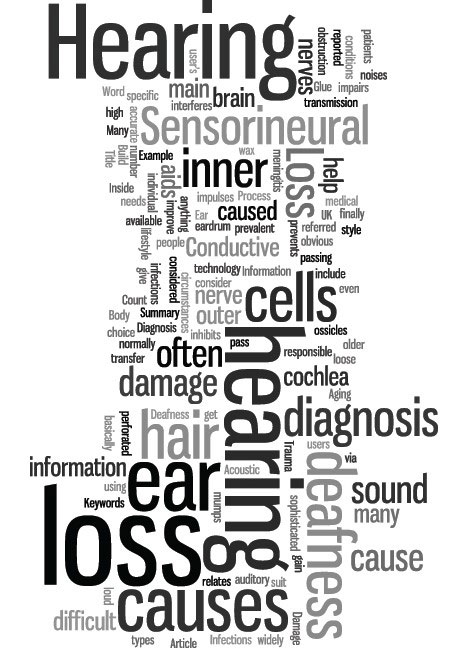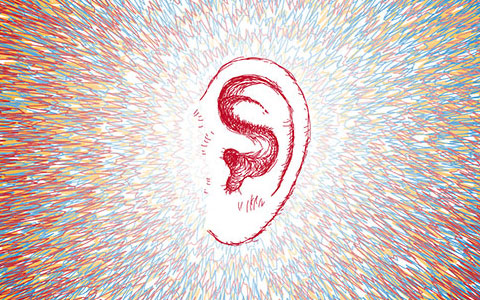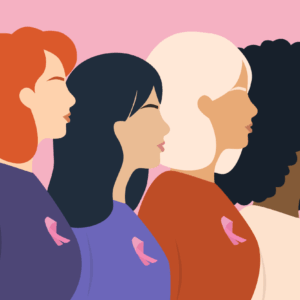Questions about Hearing Loss?
Are you having trouble hearing? It’s easier to blame noisy restaurants or workplaces? Do you think that “everyone mumbles”, or that your granddaughter has a very soft voice? The fact is, hearing loss typically happens to us very slowly, over a long time, so it’s easy to miss. And it’s more common than you might think.
You’re Not Alone When it Comes to Hearing Loss!
The latest statistics show that over 10% of the U.S. population reports difficulty hearing. That’s more than 31 million people! And as the Baby Boomer generation continues to age, that number promises to increase dramatically.
48 million Americans of all ages experience hearing loss, including one in six baby boomers. Hearing loss can be caused by exposure to noise, diabetes or other factors, but most often it’s simply a result of aging.
While you can’t stop aging, you can treat hearing loss. The good news is that most hearing loss is treatable. There is no reason to tough it out or to be left out when you could easily be getting more out of life.
With the right hearing treatment plan and hearing aid, you’ll be able to get back to the things that you enjoy most. You can stop asking people to repeat themselves. You can turn down the TV so the neighbors aren’t hearing it. With treatment, you’ll be able to stay involved in all the activities you enjoy and live life to its fullest again.
How We Hear
How is it your ear and brain work together to help you hear? Hearing begins when sound waves enter your outer ear (you know, the visible portion of the ear located on the outside of the head) and are channeled down your ear canal, a tube-like passageway lined with tiny hairs and small glands that produce earwax.
At the end of your ear canal lies the middle ear, which is composed of the eardrum and three small bones, often referred to as the malleus, the incus and the stapes. When sound waves hit your eardrum, it vibrates and, in turn, moves the bones transmitting the vibrations into your inner ear. The middle ear functions to amplify sound, which is why significant hearing loss can result from any disruption in any of its parts.
Your inner ear consists of the cochlea and the nerve of hearing. It converts sound waves into nerve impulses that travel to the brain via the movement of tiny hair cells. Then your brain interprets the sound so you “hear” it, as a voice, music or the birds in your yard.
All the parts described above create a system which enables you to hear clearly. If you’re experiencing hearing loss, it’s just a matter of determining what part of the ear is not working the way it should, and then we can create an individualized treatment plan that best addresses your needs.
The Top 8 Hearing Loss Myths
Over the last few decades there have been huge advances in both our understanding of hearing loss and the technology used to solve hearing problems. Unfortunately, most peoples’ assumptions about their hearing are outdated or plain wrong.
Before you put off treatment for another day, discover the truth about hearing loss.
Myth 1: I’d know it if I had hearing loss.
Fact: The truth is, hearing loss is so gradual that you probably won’t even notice it. That’s why denial is the most common reaction, followed by the blaming of others for mumbling or keeping the TV volume too low. People tend to be stubborn, but the fact is, if your friends or family members are telling you that you have hearing loss, you probably do — especially when you consider your odds of having hearing loss are 1 in 5.
Also remember that people without hearing loss don’t need to convince others that they can hear fine, so if you’ve been told that you need a hearing test, you should probably get one.
Myth 2: It’s not worth the trouble to improve my hearing.
Fact: Maybe to you it isn’t worth it, but just ask the people around you how they feel. It can drive your family nuts when they constantly have to repeat themselves or be driven out of the room by the volume of the TV. Seriously, hearing loss can lead to frustration, social withdrawal, and depression — even dementia. The best solution is to deal with hearing loss rather than act like it’s not a problem.
Myth 3: It doesn’t matter if I put off getting hearing aids.
Fact: Here’s the thing about hearing loss: it WILL get worse over time. Researchers even have a name for this: they call it auditory deprivation. What it means is that the longer you ignore your hearing loss, the more hearing you’ll lose that can never be recovered. Hearing aids can help, but only if you have enough hearing left to be saved.
Myth 4: If you’re hearing impaired, it’s just a matter of turning up the volume.
Fact: Sure, you can take that approach. But don’t expect to have the best relationships. When people know they’ll constantly have to repeat themselves, they tend to save themselves the trouble by avoiding you.
The right way to turn up the volume is with the use of professionally programmed hearing aids, so that you don’t have to turn up the volume on everyone else. Keep in mind that people resent being burdened when they know that someone could just as easily help themselves.
Myth 5: Hearing aids won’t work for me.
Fact: Hearing aids work for almost everyone, but only if you use the right technology with the right settings. Sure, if you buy a $20 pair of hearing aids online without any customization, then yes, hearing aids probably won’t work for you.
On the other hand, if you work with your hearing specialist to find the right hearing aid programmed for your specific hearing loss (like a pair of fine-tuned prescription glasses), your hearing aids are almost certainly going to work.
Myth 6: Wearing hearing aids will make me look dumb.
Fact: That depends. Wearing outdated hearing aids might make you look dumb, whereas wearing the newest digital hearing aid technology will probably make you look smart. The newest models are sleek and small, with some models that can fit completely inside the ear canal, making them nearly invisible.
Not to mention, if people don’t have to keep repeating themselves to you, they’ll be more than happy to see you no matter what you’re wearing.
Myth 7: I can save money by just getting one hearing aid.
Fact: You can save money by getting one hearing aid or one shoe, but we wouldn’t recommend it. If you have hearing loss in both ears, you need two hearing aids, for the same reason that you have two ears. You use both ears to locate the source of sounds, to maintain balance, and to hear sound clearly regardless of the direction it’s coming from.
If you have hearing loss in both ears, and you’re serious about improving your hearing, get two hearing aids.
Myth 8: Hearing aids are expensive.
Fact: Some flat-screen Ultra-High Definition TVs retail for more than $8,000, but the millions of people who buy these don’t think they are too expensive. It’s all about value. How much you spend relative to the benefit.
Sure you could buy a tin can for a few cents but it’s not going to help much. Or you can get the hearing aid that meets your needs, is matched to your hearing needs and lifestyle and provides you with a better life. Your hearing specialist will work within your budget to find the best hearing aid options.

 The latest statistics show that over 10% of the U.S. population reports difficulty hearing. That’s more than 31 million people! And as the Baby Boomer generation continues to age, that number promises to increase dramatically.
The latest statistics show that over 10% of the U.S. population reports difficulty hearing. That’s more than 31 million people! And as the Baby Boomer generation continues to age, that number promises to increase dramatically.




